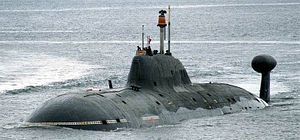The annual summer training period has begun in Russia’s second-largest fleet with dozens of large-scale naval exercises scheduled for the next few months, Roman Martov, the spokesperson for Russia’s Eastern Military District told TASS news agency on June 1.
“The summer training period began with the Saint Andrew’s flag raising ceremony, hoisting the masthead flag and dressing overall on ships and in naval units. The navy men held ceremonial parades on this day during which the best servicemen were rewarded, and then the military were set tasks for the coming months of service,” Martov said.
“The personnel will have to display their proficiency in dozens of large-scale exercises, as well as continue to perform the tasks of combat service in the oceans,” he added. Russia’s naval activities in the Pacific Ocean have incrementally increased over the last years, nearly at Cold War levels, according to some high-ranking U.S. military officers.
“Russia in the last few months has returned to, I would say, nearly a Cold War level of activity that goes towards our homeland, with long-range attacks, exercises and those types of things,” the then commander of U.S. Pacific Command, Admiral Samuel Locklear, said in April 2015.
According to Martov, during the winter months the fleet conducted around 500 gunnery drills, depth-charge throwing exercises and minelaying operations. The fleet’s naval aviation squadrons completed more than 1,400 combat drills and also flew air patrolling missions over the Sea of Japan, the Pacific Ocean and Arctic Ocean. The Pacific Fleet also participated in a number of international maritime exercises.
“In January 2016, a detachment of the Pacific Fleet ships, led by the Guards missile cruiser Varyag [the fleet’s flagship], returned to its home base in Vladivostok. Over three months of their long voyage, the Pacific Fleet warships visited the Pacific Ocean and Indian Ocean, visited four Asia-Pacific countries, and in December successfully conducted the Indra Navy 2015 joint exercise with the Indian Nay in the waters of the Bay of Bengal, ” Martov said.
Russia’s Pacific Fleet operates out of four naval bases, Kamchatskiy, Magadan, Petropavlovsk, and Sovetskaya Gavan, all located in the Russian Far East. In the last three years, for the first time since the collapse of the Soviet Union, the Pacific Fleet has been receiving new ships including the Alexander Nevsky, a Borei-class (aka Dolgorukiy-class), Project 955, fourth generation nuclear-powered ballistic submarine (SSBN). Another Borei-class SSBN, the Vladimir Monomak, is scheduled to join the Pacific Fleet in August or September. The fleet is also slated to receive a number of new surface combatants and maritime patrol aircraft over the next two years.
However, as I wrote in The Diplomat Magazine in April, “the next years will show whether this is just a temporary peak and whether Russia has the ability to add new surface warships and submarines, and upgrade Soviet-era vessels in adequate numbers in order not to reduce the combat power of the Russian Navy [in the long-run].”

































